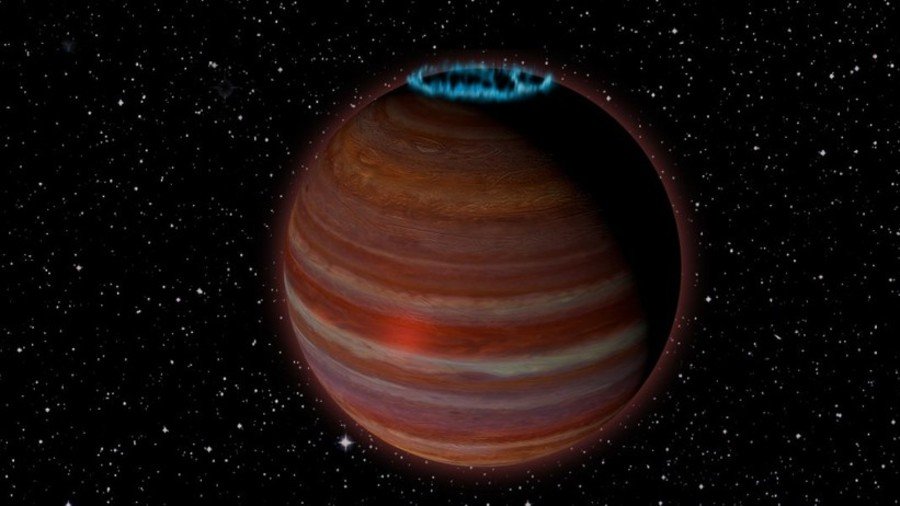Mysterious gigantic rogue planet spotted lurking outside our solar system

A mysterious large object is floating around outside our solar system and researchers aren’t sure exactly what it is – although it could be a rogue planet.
In the first radio-telescope detection of a planetary-mass object beyond our solar system, astronomers have found the strange celestial body has 12.7 times the mass of Jupiter. It doesn’t appear to orbit a parent star, however, and is only 20 light-years away from Earth.
“This object is right at the boundary between a planet and a brown dwarf, or ‘failed star,’ and is giving us some surprises that can potentially help us understand magnetic processes on both stars and planets,” study lead astronomer Melodie Kao said.
They’re back! Worms unfrozen after 42,000 years are alive and eating https://t.co/lxVYx61cibpic.twitter.com/EbKEXBke9c
— RT (@RT_com) July 26, 2018
A brown dwarf is an object too large to be a planet, but isn’t big enough to sustain the nuclear fusion of hydrogen in its core that is vital to stars.
The object, which has been named SIMP J01365663+0933473, was first detected in 2016, but was thought to be a brown dwarf. The latest data reveals it’s younger than first thought at a relatively youthful 200 million years old, and its mass is smaller, so it could be classified as a planet. Its temperature is also far cooler than the sun, at 825 degrees Celsius. It also has a strong magnetic field, 200 times the strength of Jupiter.
READ MORE: Blood-curdling video shows near-Earth asteroids spotted by NASA have skyrocketed in 20yrs
The researchers were able to pick up on the object’s magnetic activity using a powerful radio astronomy observatory called the Very Large Array, a National Science Foundation facility in New Mexico.
The methods used suggest the researchers may have “a new way of detecting exoplanets, including the elusive rogue ones not orbiting a parent star,” researcher Gregg Hallinan said.
Like this story? Share it with a friend!













